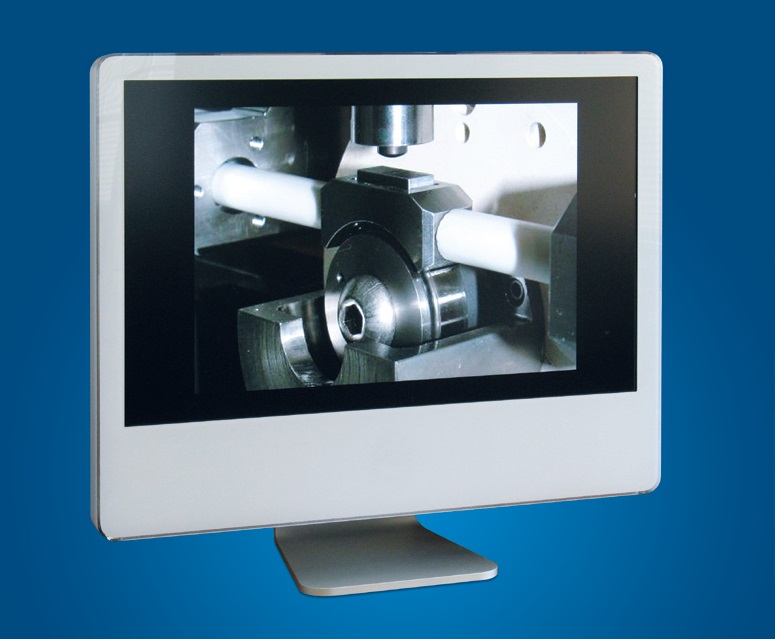Developing liquid crystals as lubricants
R. David Whitby | TLT Worldwide March 2009
Normally found in flat-panel displays, these pricey substances could actually have potential as low-cost lubricants.

Liquid crystals exhibit a phase state that is between a liquid and a solid crystal.
www.canstockphoto.com
The most common use for liquid crystals is in flat-panel electronic displays, particularly for computers, mobile phones and televisions. But since the late 1980s, manufacturers of these materials have been investigating other potential applications.
The idea of assessing the lubricating properties of liquid crystals is not new. In March 1991 Pennzoil Products Co. was granted U.S. Patent No. 4999122 for “Non-aqueous lamellar liquid crystalline lubricant compositions comprise an organic acid component or a salt thereof, an organic amine component and a non-aqueous solvent which maintains the liquid crystalline properties of a mixture of the organic acid or salt thereof and the organic amine.”
The liquid crystalline material was claimed to impart friction-reducing properties to the lubricant composition when used at between 0.1% and 5.0% weight.
There have been other research studies showing that the friction-reducing properties of liquid crystals under specific conditions, including those published by Y. Kimura, K. Nakano and T. Kato from the University of Tokyo’s School of Engineering in 1996 and V. Mokshin and V. Vekteris from the Vilnius Gediminas Technical University in 2003 and 2007.
Nematel GmbH & Co. KG, a German manufacturer of liquid crystals, has contracted with the Fraunhofer Institute for Applied Polymer Research to investigate which liquid crystals are most suitable for use as lubricants and under what conditions. The Fraunhofer testing unit exerts a specified force on a clamped metal cylinder that is moved back and forth over a supporting contact surface.
Unlike conventional lubricants, liquid crystals exhibit a phase-state that is between a liquid and a solid crystal; they are able to flow like a liquid but have organic molecules oriented in a crystal-like way. Most liquid crystal molecules are roughly cigar-shaped and line up parallel to each another. In theory, they should reduce the points of contact between rubbing surfaces.
Under lightly loaded conditions, friction falls to almost zero after awhile when liquid crystals are used as additives in lubricant formulations. The time this takes depends primarily on the pressure with which the moving cylinder is pressed against the contact surface. The Fraunhofer Institute reported that liquid crystals are not suitable as a lubricant for ball bearings because the contact pressures are too high and the friction does not drop far enough. However, for plain bearings, liquid crystals have been found to reduce friction significantly.
It has also been found that liquid crystals only reduce friction more than other lubricants at temperatures between 20 C and 140 C. If the temperature rises above this, the effect breaks up and the friction coefficient is the same as other lubricants. This means, for example, that currently available liquid crystals cannot be used in engine or compressor oils. However, Nematel believes they might be useful in oils or greases for thread guides, spindle bearings, linear bearings, worm gears, telescopes and other applications.
Since liquid crystals are made mainly for displays, they have to be ultrapure. This makes them very expensive, so Nematel is planning to simplify the synthesis process to make less pure substances that are still suitable lubricants. The Fraunhofer Institute and Nematel are also working to extend the operating temperature range of liquid crystals.
Nematel is hoping to market a liquid crystal lubricant in three to five years. The company is currently offering smectogenic liquid crystals (S2, S8 and S11) with rod-like molecules and discogenic liquid crystals (D1, D2 with D3) with disc-like molecules.
Whether liquid crystals will ever be sufficiently low cost for lubricant applications or useable at temperatures down to -40 C or up to 200 C depends on its success and further research work. As with all development and commercialization programs, only time will tell.
 David Whitby is chief executive of Pathmaster Marketing Ltd. in Surrey, England. You can reach him at pathmaster@dial.pipex.com
David Whitby is chief executive of Pathmaster Marketing Ltd. in Surrey, England. You can reach him at pathmaster@dial.pipex.com.